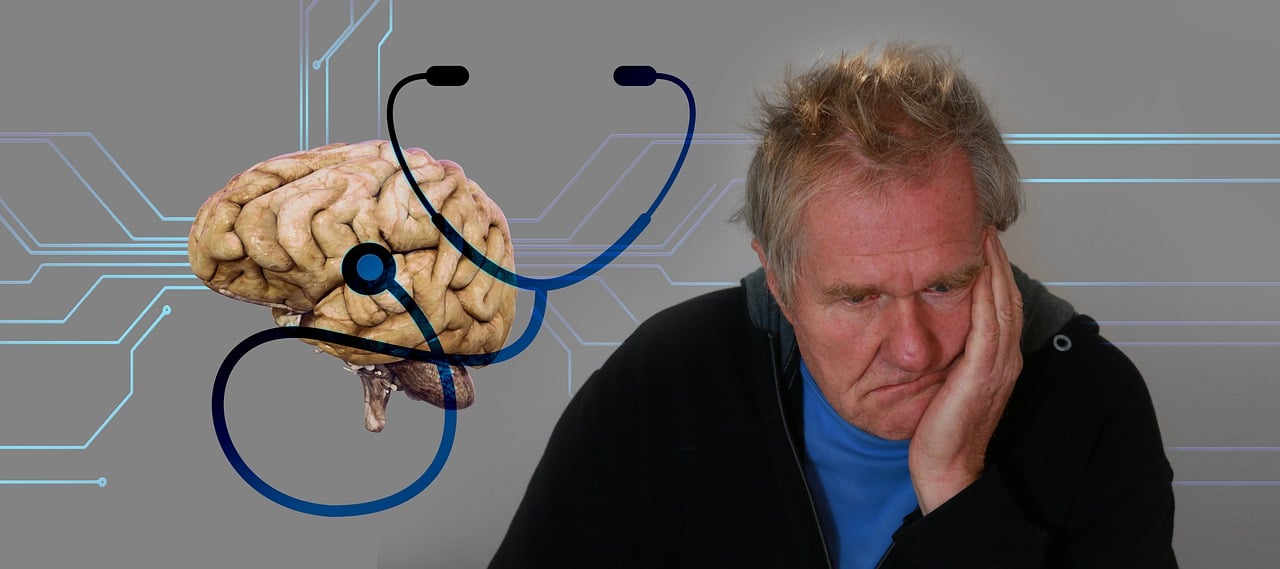Neurodegenerative diseases represent a significant and growing challenge in global health, affecting millions of individuals worldwide. These conditions are characterized by the gradual loss of neuron function and structure leading to a progressive decline in cognitive and motor abilities. As populations age, the prevalence of these diseases, which includes Alzheimer’s Disease, Parkinson’s Disease, and amyotrophic lateral sclerosis, has been rising, exerting substantial impact not only on patients but also on caregivers and healthcare systems. Studies like those from the Global Burden of Disease provide a systematic analysis of the incidence and distribution of neurological disorders, informing us about the scale and dynamics of the burden they present.
With advances in medical technologies and global connectivity, the understanding of neurodegenerative diseases has expanded, yet there remains a vast need for improved diagnostics and treatments. Clinicians are often confronted with a variety of symptoms and rates of progression, complicating the care for elderly populations most affected by these diseases. While typical neurodegenerative diseases like Alzheimer’s are more commonly diagnosed, there is an urgent need to enhance clinician training to recognize and manage less common disorders.
Research continues to delve into the complex genetic and environmental causes underlying these diseases, seeking new therapeutic and preventative strategies. It’s recognized that a multidisciplinary approach is needed to tackle the challenges posed by neurodegenerative diseases. Initiatives and research institutions, such as Yale’s Division of Neurodegenerative Disorders, are key players in pushing the boundaries of our knowledge, aspiring to bring forth innovative solutions that could potentially alter the trajectory of these debilitating diseases, thus reshaping the future landscape of neurodegenerative disease management and patient care.

I am a Nurse Practitioner licensed across multiple states, with experience in cardiology, nephrology, and family medicine. My current focus is on primary care, where I advocate for a holistic approach to healthcare, often recommending functional medicine to patients when suitable.
Epidemiology of Neurodegenerative Diseases
Neurodegenerative diseases represent a significant challenge in public health due to their high prevalence, particularly among the aging population. These conditions, which include Alzheimer’s Disease (AD), Parkinson’s Disease (PD), amyotrophic lateral sclerosis (ALS), and Frontotemporal Dementia (FTD), are characterized by the progressive loss of neuronal function and structure.
Prevalence and Incidence:
- Alzheimer’s disease is most prevalent, with estimates suggesting more than 5 million cases in the United States alone.
- Parkinson’s disease affects approximately 1 million individuals in the U.S., with tens of thousands of new cases diagnosed each year.
- ALS is less common, with about 5,000 new cases in the U.S. annually.
Age Factor:
- Neurodegenerative diseases primarily affect the elderly. The risk of developing such conditions increases with age, especially after 65 years.
Genetic Influence:
- Certain forms of neurodegenerative diseases have a genetic component, making some individuals more susceptible based on family history.
Global Impact:
- The burden of neurodegenerative diseases is growing worldwide, with increasing life expectancy contributing to a higher incidence.
This field of study is continuously expanding as researchers uncover new patterns in disease progression and the various underlying genetic and environmental factors. Institutions like Yale School of Medicine are at the forefront of examining these diseases and seeking better methods of diagnosis and care. Through such efforts, the understanding of epidemiology within neurodegenerative diseases is poised to evolve, offering hope for advancements in treatment and potentially prevention strategies.
Types of Neurodegenerative Disorders
Neurodegenerative disorders encompass a range of conditions that predominantly affect the neurons in the human brain. They are often incurable and debilitating conditions that result in progressive degeneration or death of nerve cells.
Alzheimer’s Disease
Alzheimer’s disease is characterized by the accumulation of amyloid plaques and tau tangles in the brain, leading to the decline of cognitive functions. It is the most common cause of dementia, manifesting in memory loss and difficulties with thinking, problem-solving, and language.
Parkinson’s Disease
Parkinson’s disease primarily affects movement, featuring symptoms such as tremors, muscle stiffness, and slow movement. It stems from the loss of dopamine-producing cells in an area of the brain called the substantia nigra.
Huntington’s Disease
Huntington’s disease is a hereditary disorder caused by a faulty gene on chromosome 4. This gene leads to the production of an abnormal protein that affects the brain, resulting in chorea—jerky, random, and uncontrollable movements—as well as cognitive and psychiatric issues.
Amyotrophic Lateral Sclerosis
Amyotrophic lateral sclerosis (ALS), also known as Lou Gehrig’s disease, involves the degeneration of motor neurons that control voluntary muscles. This leads to muscle weakness, loss of motor function, and, ultimately, respiratory failure.
Multiple Sclerosis
Multiple sclerosis is marked by an immune-mediated process where an abnormal response of the body’s immune system is directed against the central nervous system. It manifests in a wide range of symptoms, including physical, mental, and sometimes psychiatric problems.
Risk Factors for Neurodegenerative Diseases
Several factors contribute to the onset and progression of neurodegenerative diseases. It is essential to understand these risks to better prevent and manage conditions such as Alzheimer’s, Parkinson’s, and ALS.
Genetic Predisposition
Genetic factors play a significant role in neurodegenerative diseases. Certain genes have been identified as increasing the risk for diseases such as Alzheimer’s. For example, the presence of the APOE ε4 allele is a well-known genetic risk factor for Alzheimer’s disease. Similarly, mutations in the LRRK2 gene are associated with an increased risk of Parkinson’s disease. Studies suggest that genes encoding lysosomal pathway proteins could influence the susceptibility to inherited neurodegenerative diseases.
Environmental Influences
Exposure to certain environmental factors can also affect the likelihood of developing neurodegenerative diseases. These can include exposure to pesticides, heavy metals, and air pollution. For instance, prolonged exposure to certain pesticides has been linked to a higher incidence of Parkinson’s disease, indicating how environment can interact with one’s genetic makeup to affect disease risk.
Age-Related Factors
The risk of developing neurodegenerative diseases increases with age. As the population ages, the prevalence of conditions like Alzheimer’s and Parkinson’s disease continues to rise. The aging process itself may lead to the accumulation of damaged proteins in neurons, which can contribute to the onset of neurodegenerative diseases. Age-related changes in brain structure and function can make the elderly more susceptible to neurodegenerative conditions.
Global Impact and Prevalence Trends
Neurodegenerative diseases present a growing challenge globally, with impacts that span health systems, economies, and communities. These conditions, including Alzheimer’s, Parkinson’s, and amyotrophic lateral sclerosis (ALS), affect millions and are characterized by the gradual loss of neuron function.
The Global Burden of Disease Study 2019 provides insights into these impacts, offering data on disease prevalence and trends. Through its comprehensive assessment, the study serves as a valuable resource for policymakers aiming to address these health challenges.
Dementia, a significant subset of neurodegenerative diseases, is reported to affect approximately 55 million people worldwide. The prevalence is rising due to a growing and aging global population. A study from The Lancet Public Health forecasted an increase in dementia cases, stressing the need for global preparedness in managing this trend.
Neurodegenerative disease progression is also being mapped, with research from MIT revealing newly identified patterns, adding to the complexity in understanding these diseases. Similarly, Harvard Medical School highlights fresh insights into the molecular mechanisms behind the cognitive decline seen in neurodegenerative conditions.
These statistics underscore the importance of continued research and strategic health planning as the world grapples with the escalating impact of neurodegenerative diseases.
Diagnosing Neurodegenerative Diseases
Accurate diagnosis of neurodegenerative diseases is important for patient care and treatment planning. This section explores established methods of diagnosis, from clinical assessments to advanced testing techniques.
Clinical Assessment
Physicians use a detailed clinical assessment including patient history, symptom review, and neurological examinations to diagnose neurodegenerative diseases. They assess cognitive functions and look for motor abnormalities to distinguish between diseases like Alzheimer’s, Parkinson’s, or ALS.
Biomarker Testing
Biomarker testing has become an integral part of diagnosing neurodegenerative diseases. Specific biomarkers can be identified in blood tests, cerebrospinal fluid (CSF), and through genetic testing, offering a more definitive diagnosis.
Neuroimaging Techniques
Advancements in neuroimaging techniques such as MRI and PET scans provide critical insights into brain structure and function. These techniques help to detect abnormalities in brain patterns associated with different neurodegenerative diseases.
Treatment Approaches for Neurodegenerative Disorders
In the management of neurodegenerative diseases, treatment strategies often aim to alleviate symptoms, slow disease progression, and improve the quality of life for patients. These approaches include pharmacologic treatments, surgical interventions, and the implementation of lifestyle adjustments along with supportive care.
Pharmacologic Treatments
Pharmacologic interventions are primarily targeted at managing symptoms and providing neuroprotection. In the case of Alzheimer’s Disease, medications such as donepezil, rivastigmine, and memantine may be prescribed to improve cognitive function or delay its decline. For Parkinson’s disease, levodopa combined with carbidopa is commonly used to mitigate motor symptoms. Research into gene-targeting therapies, such as the application of antisense oligonucleotides, offers hope for directly addressing genetic causes behind certain neurodegenerative diseases.
Surgical Interventions
In select neurodegenerative disorders, particularly Parkinson’s disease, surgical options such as Deep Brain Stimulation (DBS) can be effective for some patients. DBS involves the surgical implantation of electrodes within the specific brain areas to deliver electrical impulses that regulate abnormal impulses. This procedure can lead to significant improvement in tremors, stiffness, and difficulty with walking.
Lifestyle and Supportive Care
Supportive care encompasses a range of services designed to support the person living with a neurodegenerative disorder. Physical therapy, occupational therapy, and speech therapy can help maintain function and independence. Nutritional support, exercise programs, and cognitive training are also integral parts of managing these diseases. Furthermore, support for caregivers is helpful due to the challenging nature of providing long-term care.
Prevention and Risk Reduction Strategies
In addressing neurodegenerative diseases, preventive measures are paramount. They amplify the body’s resilience against the onset and progression of such conditions.
Lifestyle Modifications
Neurodegenerative disease progression can be influenced by one’s lifestyle choices. Engaging in regular physical activity and maintaining a healthy sleep schedule may significantly reduce the risk. Physical exercise has been associated with decreased rates of cognitive decline, with studies suggesting that it promotes neuroplasticity and brain health. Adequate sleep, on the other hand, is essential for brain detoxification processes that may prevent neurodegenerative disease pathology.
Dietary Considerations
Diet also plays a huge role in mitigating the risk of neurodegenerative diseases. Consuming foods high in antioxidants and anti-inflammatory properties—such as berries, leafy greens, and fatty fish—can support brain health. Moreover, reducing the intake of foods linked to inflammation, such as red meat and processed foods, is encouraged. Studies underscore the importance of a balanced diet rich in nutrients like omega-3 fatty acids, which are known for their protective effects on the brain.
Pharmacological Prophylaxis
While lifestyle and diet are critical, certain medications and supplements may offer preventative benefits for those at high risk of developing neurodegenerative diseases. For instance, some medications that affect neurotransmitter levels, like specific antidepressants or cognitive enhancers, can be prescribed to delay the onset of symptoms. It is also observed that some supplements, like vitamin D or curcumin, have potential neuroprotective effects. Nonetheless, pharmacological interventions should always be considered carefully and under medical supervision to weigh the potential risks and benefits.
Research and Developments in Neurodegeneration
Significant strides are being made in the field of neurodegenerative diseases, which include Alzheimer’s, Parkinson’s, ALS, and Huntington’s. Scientists primarily focus on understanding the mechanisms that trigger these diseases. Recent findings suggest that protein misfolding and aggregation in the brain are common pathological features among various neurodegenerative disorders.
Researchers at MIT have uncovered that neurodegenerative diseases might progress in newly identified patterns, enhancing our understanding of these illnesses and potentially leading to more targeted treatments. The study highlights the complexity of these conditions and discusses ALS, where the degeneration of voluntary muscle movement is a key concern.
Furthermore, insights into the role of lysosomal function in genetic forms of Parkinson’s disease were discussed by Harvard scientists, hinting at the importance of lipid-protein interactions within lysosomes for neurodegeneration.
- Misfolded proteins
- Synapse loss
- Genetic variations
The reciprocal relationship between these factors forms the basis of ongoing research.
Yale Medicine has offered new insights on the roles of misfolded proteins and synapse loss, while also exploring the different influences leading to these diseases.
Conferences, such as the gathering hosted by the Glaucoma Research Foundation and others, titled “Solving Neurodegeneration,” are key platforms where experts discuss common mechanisms and strategies for developing new treatments.
Lastly, the Mayo Clinic’s Research Lab emphasizes the molecular disease mechanisms in their study of neurodegenerative diseases, aiming to create therapeutic strategies for these challenging disorders.
Economic Burden and Health Care Resources
The financial implications of neurodegenerative diseases are substantial for both individuals and healthcare systems. With an increasing prevalence of neurodegenerative diseases across the globe, the cost of care escalates, stressing not only the patients and their families but also the existing healthcare infrastructure.
Direct Costs:
- Medical treatments
- Hospital stays
- Out-of-pocket expenses for medications
- Long-term care facilities
Indirect Costs:
- Loss of income due to inability to work
- Family caregiver time
- Reduced quality of life
People facing the challenges of diseases like Alzheimer’s or Parkinson’s often encounter uneven accessibility to healthcare services, which can be dependent on socioeconomic status. This disparity can lead to variations in the quality of care received and potentially affects disease outcomes.
- Lower socioeconomic status often correlates with:
- Poorer health outcomes
- Limited access to specialized care
- Delays in diagnosis
Health care resources are taxed by the growing demands for specialized care units and trained professionals adept at managing these complex conditions. Research initiatives and development of therapeutics add to the financial load but are essential for advancing treatment and improving patient prognoses. Institutions such as UT Health San Antonio play a pivotal role in expanding our understanding and management of these diseases, thereby informing resource allocation.
The economic burden of neurodegenerative diseases highlights the need for comprehensive strategies that address both the direct and indirect costs, while ensuring equitable access to care.
Patient Support and Advocacy
Patient support for individuals with neurodegenerative diseases is paramount due to the complexities and challenges these conditions present. Support groups play a critical role by providing a space for patients and caregivers to share experiences and coping strategies. Organizations like the ALS Association offer resources and advocacy that are invaluable for those affected by amyotrophic lateral sclerosis.
Advocacy organizations also drive policy changes and increase public awareness. They often spearhead efforts to fund research for new treatments. For example, the Alzheimer’s Association not only supports individuals and their families but is also at the forefront of advocating for research and improved care practices.
Communication enhancement is another aspect of patient support. Since neurodegenerative diseases can impair an individual’s ability to communicate, tools and strategies to aid communication are essential. An example of such support can be found in resources offered by the OHSU, which highlights the importance of collaborative communication goals between patients and care partners.
Financial assistance is another key support provided by advocacy groups. The cost of managing neurodegenerative diseases can be overwhelming, and assistance programs can offer much-needed relief. These programs may help cover the cost of medical equipment, home care services, and medication.
In summary, patient support and advocacy organizations are a big part of aiding those impacted by neurodegenerative diseases. They offer a range of services that address the physical, emotional, and financial needs of patients and families.
Frequently Asked Questions
These frequently asked questions cover the key points of neurodegenerative diseases, such as their prevalence, impact on populations, treatment advancements, special cases, and the overall implications for health systems.
How common are neurodegenerative diseases globally?
Neurodegenerative diseases are increasingly prevalent worldwide, affecting millions of people. They encompass conditions like Alzheimer’s Disease and Parkinson’s Disease, which present significant challenges to those diagnosed and their caregivers.
What is the burden of neurodegenerative diseases in the U.S. population?
Within the United States, neurodegenerative diseases impose a profound burden on health care systems and families. Diseases such as ALS, Alzheimer’s, and Parkinson’s affect different populations at varying rates, contributing to long-term care needs and associated costs.
What new treatments are available for neurodegenerative diseases?
Researchers have been actively developing new treatments for neurodegenerative diseases, such as advanced drugs targeting specific pathways and novel therapies aimed at genetic factors underlying these conditions.
What are some examples of rare neurodegenerative diseases?
Examples of rare neurodegenerative diseases include Frontotemporal Dementia (FTD), which represents a fraction of dementia cases, and genetic forms often seen clustering in families. It notably targets younger individuals, usually diagnosed between ages 45 and 65.
What is the impact of neurodegenerative diseases on health systems?
The impact of neurodegenerative diseases on health systems is considerable, as they require long-term, often complex, care strategies. These diseases lead to significant expenditures for medical care, social services, and support infrastructure.
How have treatments for neurodegenerative diseases evolved in recent years?
In recent years, treatments for neurodegenerative diseases have evolved with a focus on understanding their underlying mechanisms. Progress has been made in identifying genetic causes, regulatory pathways, and developing biomarkers, leading to more targeted and effective treatments.

